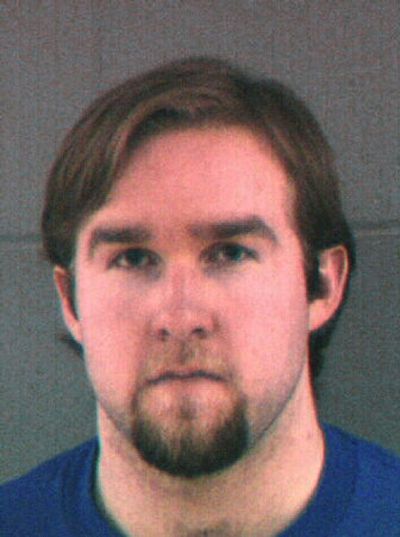Killer could have shot more

SEATTLE – As Kyle Huff walked through a home in the Capitol Hill neighborhood one morning last March, slaughtering six young partygoers and boasting that he had “enough ammunition for everyone,” he apparently lost his taste for killing after a while, says a report from a panel that studied the crime.
Huff passed up easy chances to kill two people cowering in a bathroom, one who was sleeping in plain view, and several others who were poorly hidden behind furniture, according to the panel, headed by Northeastern University mass-murder expert James Alan Fox.
“It was as if he had lost interest in shooting any more, or it was just too much effort,” the report said. “It may be that whatever satisfaction he had hoped to derive from the shooting spree was not forthcoming or had been satiated.”
Huff, 28, did fire one more shot the morning of March 25, killing himself outside the house the instant he was confronted by a police officer. His suicide precluded the need for a police investigation, but the Seattle Police Department asked Fox to assemble a four-member panel to study the case.
The 31-page report, released at a neighborhood meeting Monday night, sought to answer several questions about the shooting. The first: Why did it happen?
But also, why wasn’t it worse? Huff had two guns and hundreds of rounds of ammunition and could have killed many more. As he walked through the house, he repeatedly pumped his shotgun even though it was ready to fire, ejecting unspent shells. Was he most concerned with appearing threatening? Or was he just disorganized?
Fox and Police Chief Gil Kerlikowske told about 80 people at the community meeting that there was no single factor that triggered the shooting, and that Huff had been planning it for at least days, and probably weeks. “There were people who wanted a single point of blame. … There isn’t a single tipping point,” Kerlikowske said.
Life of frustrations
The report acknowledged that many of the questions can’t be answered with any certainty. It portrays Huff as aimless, unsuccessful, lonely and depressed – an unemployed, uneducated pizza delivery boy who left his few friends in Whitefish, Mont., behind when he moved to Seattle with his twin brother in 2002. His life was a series of frustrations, from his parents’ divorce to his poor grades, his difficulty relating to women and his envy of his more successful brother.
Those frustrations may have laid the groundwork for what happened. Huff also may have found a psychological model for dealing with them in a 2002 murder-suicide, in which one of his high school friends killed his parents and then himself.
The report also suggested that although there were subtle signs of emotional trouble, there were no clear warning signs that could have prevented the killings. The crime shocked both Huff’s twin brother and his mother, it said.
Huff likely turned to Seattle’s welcoming rave community for friendship, but apparently even there he did not fit in, the report suggested, and he came to view the rave lifestyle – including drug use and promiscuity – as a threat. In a suicide letter that was discovered in a trash bin in April, Huff wrote that he felt “raped” by the rave scene. Mass killers often blame others for their problems, the report noted.
Witnesses told the panel that Huff appeared to stalk the Seattle rave scene.
On the eve of the shooting, he sat in his truck outside Studio Seven until security guards chased him off, the report said.
He then headed to the “Better Off Undead” zombie-themed rave at the Capitol Hill Arts Center. There, he stood out, a 6-foot-5, 270-pound wallflower, one of the few people not in costume and not dancing. His awkwardness prompted a resident of the home on East Republican Street to invite him to an after-party.
As city buses began running at 7 a.m. and people began leaving the after-party, Huff slipped out to his truck and got two of his guns, a shotgun and a handgun. He spraypainted “NOW” three times as he walked back to the party, possibly a reference to a refrain in the Nirvana song “I Want to Know Now.”
Then he began shooting. He killed six people ages 14 to 32 and wounded two others. A Seattle police officer was nearby, heard the shots and was on the scene within one minute.
The report offered some criticism of the way officials handled the chaotic aftermath of the shooting. Terrified survivors were taken out of the house through the front door, where they had to step past the corpses of their friends, instead of out a back door. And, the report suggested, families were disgusted when they had to pay $20 to the county medical examiner’s office to obtain autopsy and toxicology reports of their loved ones.
Kerlikowske said the department had done some self-examination in light of those criticisms.
“We thought we were doing everything right,” he said. “Guess what? We weren’t.”